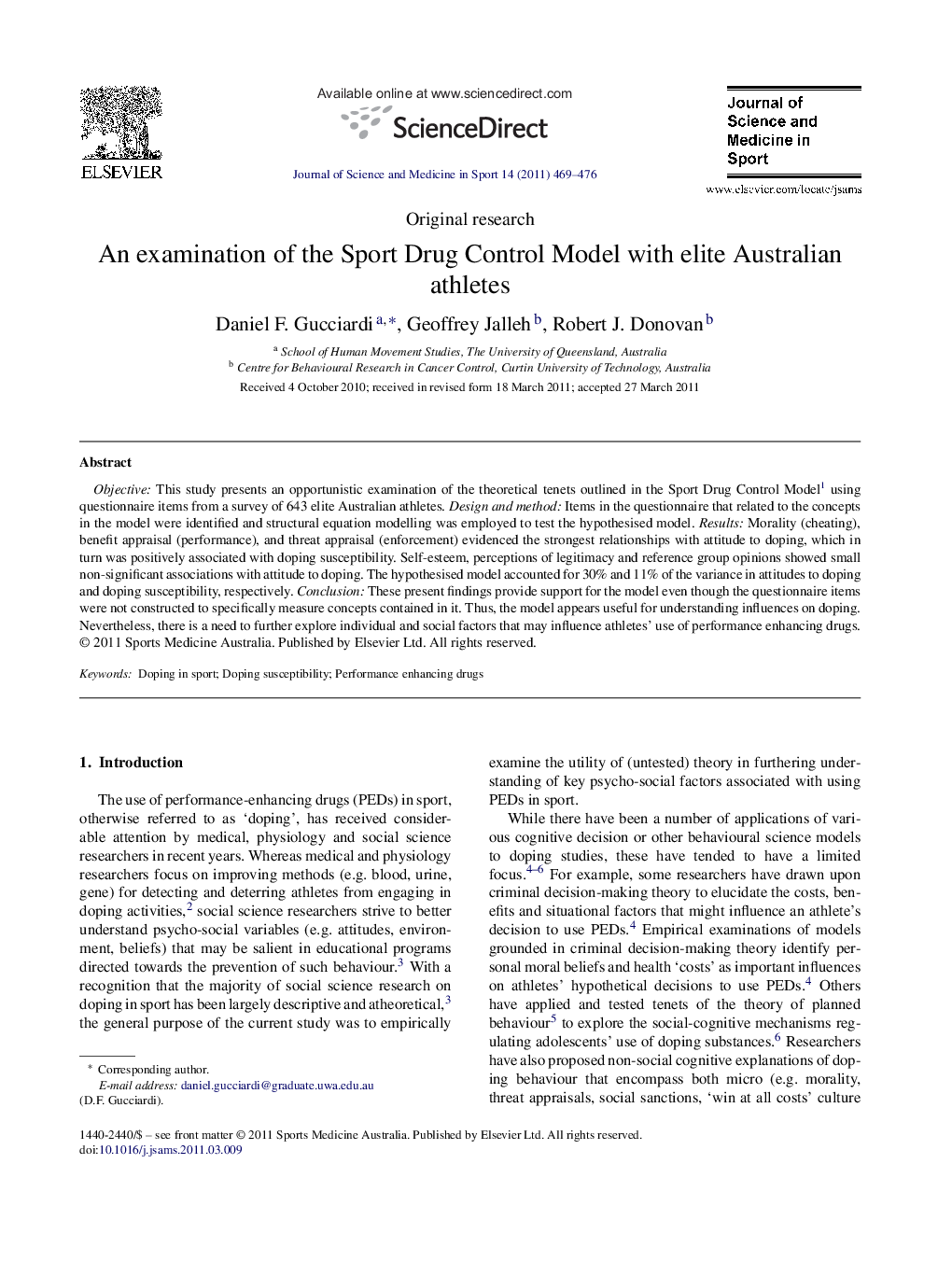| Article ID | Journal | Published Year | Pages | File Type |
|---|---|---|---|---|
| 2700713 | Journal of Science and Medicine in Sport | 2011 | 8 Pages |
Objective: This study presents an opportunistic examination of the theoretical tenets outlined in the Sport Drug Control Model 1 using questionnaire items from a survey of 643 elite Australian athletes. Design and method: Items in the questionnaire that related to the concepts in the model were identified and structural equation modelling was employed to test the hypothesised model. Results: Morality (cheating), benefit appraisal (performance), and threat appraisal (enforcement) evidenced the strongest relationships with attitude to doping, which in turn was positively associated with doping susceptibility. Self-esteem, perceptions of legitimacy and reference group opinions showed small non-significant associations with attitude to doping. The hypothesised model accounted for 30% and 11% of the variance in attitudes to doping and doping susceptibility, respectively. Conclusion: These present findings provide support for the model even though the questionnaire items were not constructed to specifically measure concepts contained in it. Thus, the model appears useful for understanding influences on doping. Nevertheless, there is a need to further explore individual and social factors that may influence athletes’ use of performance enhancing drugs.
